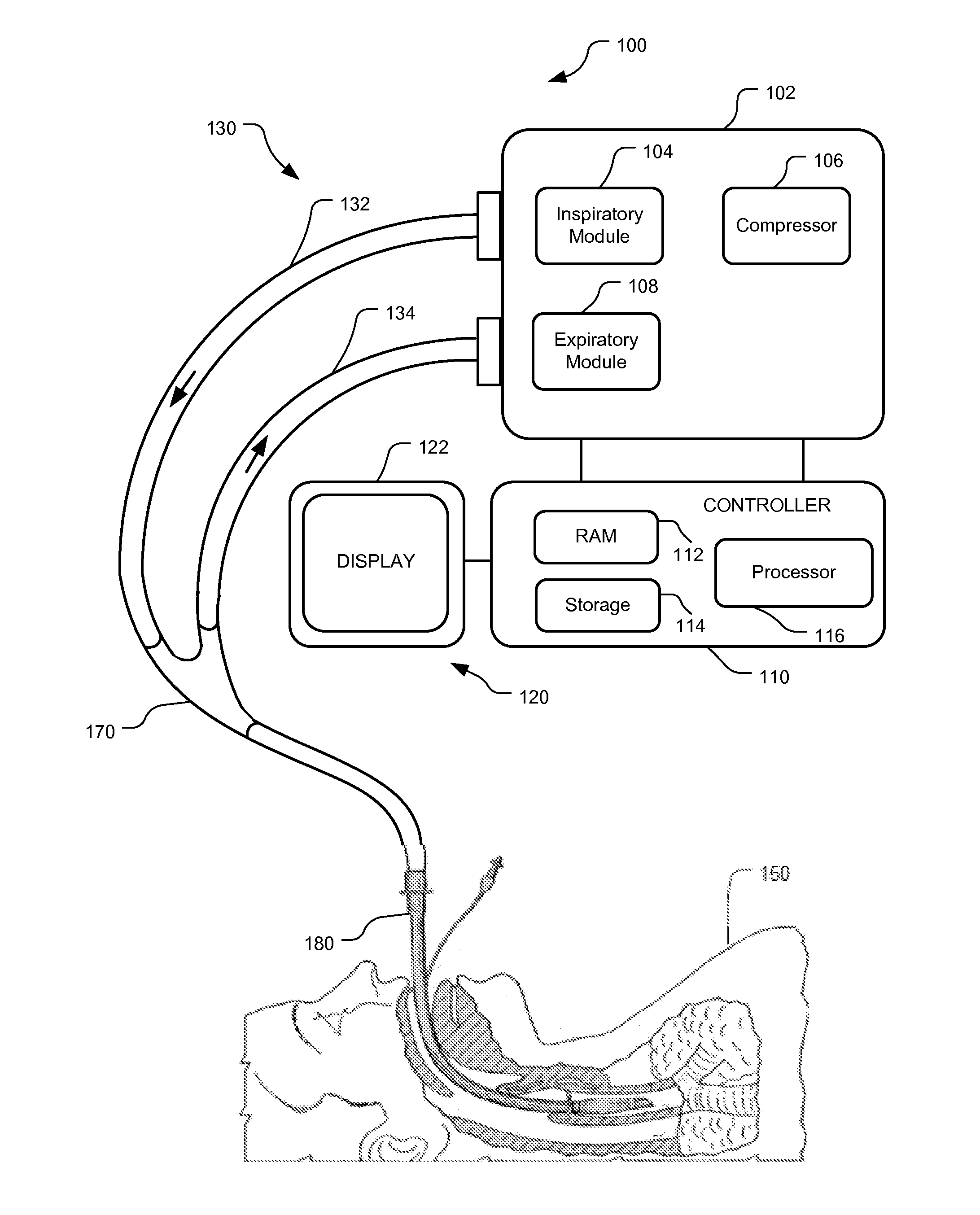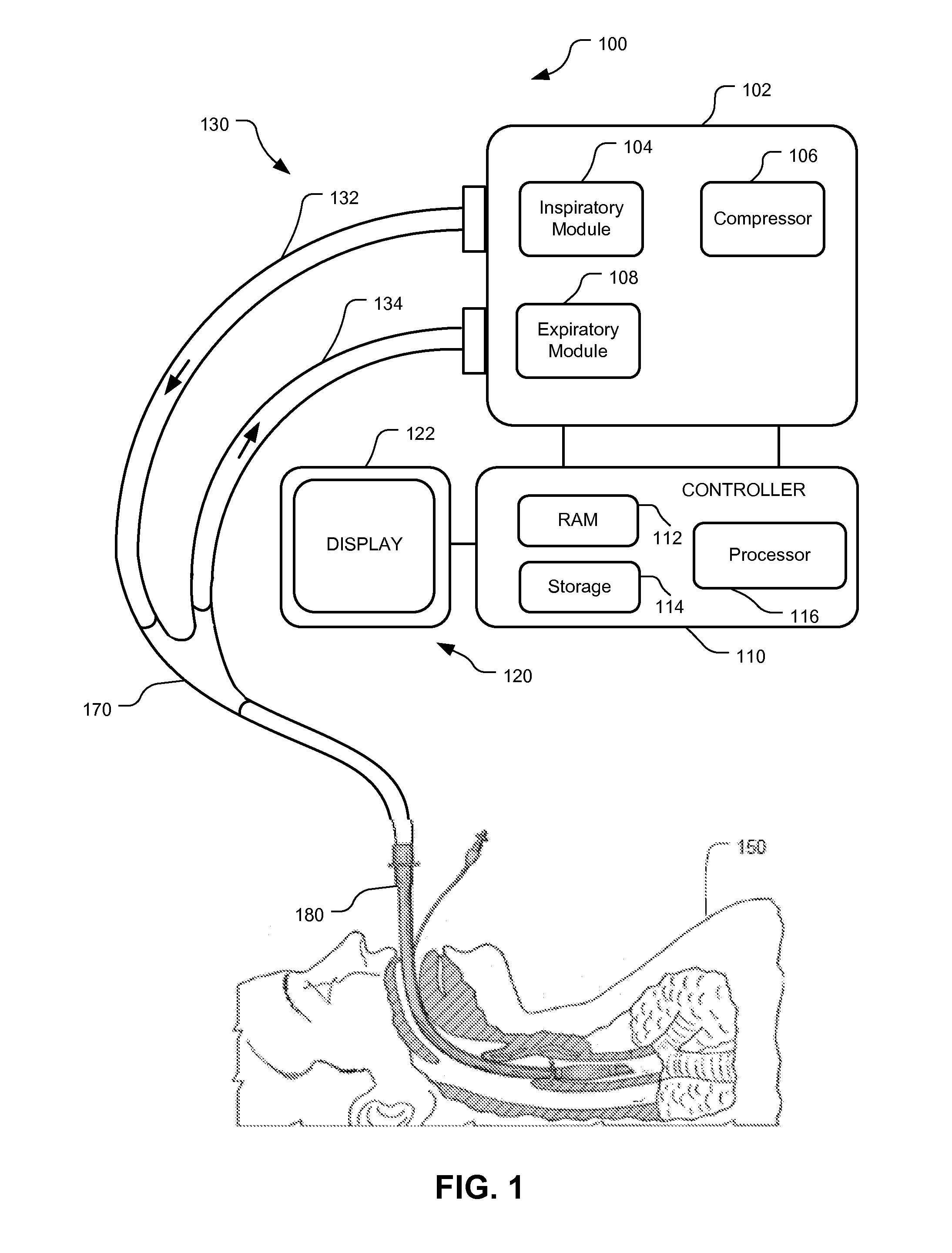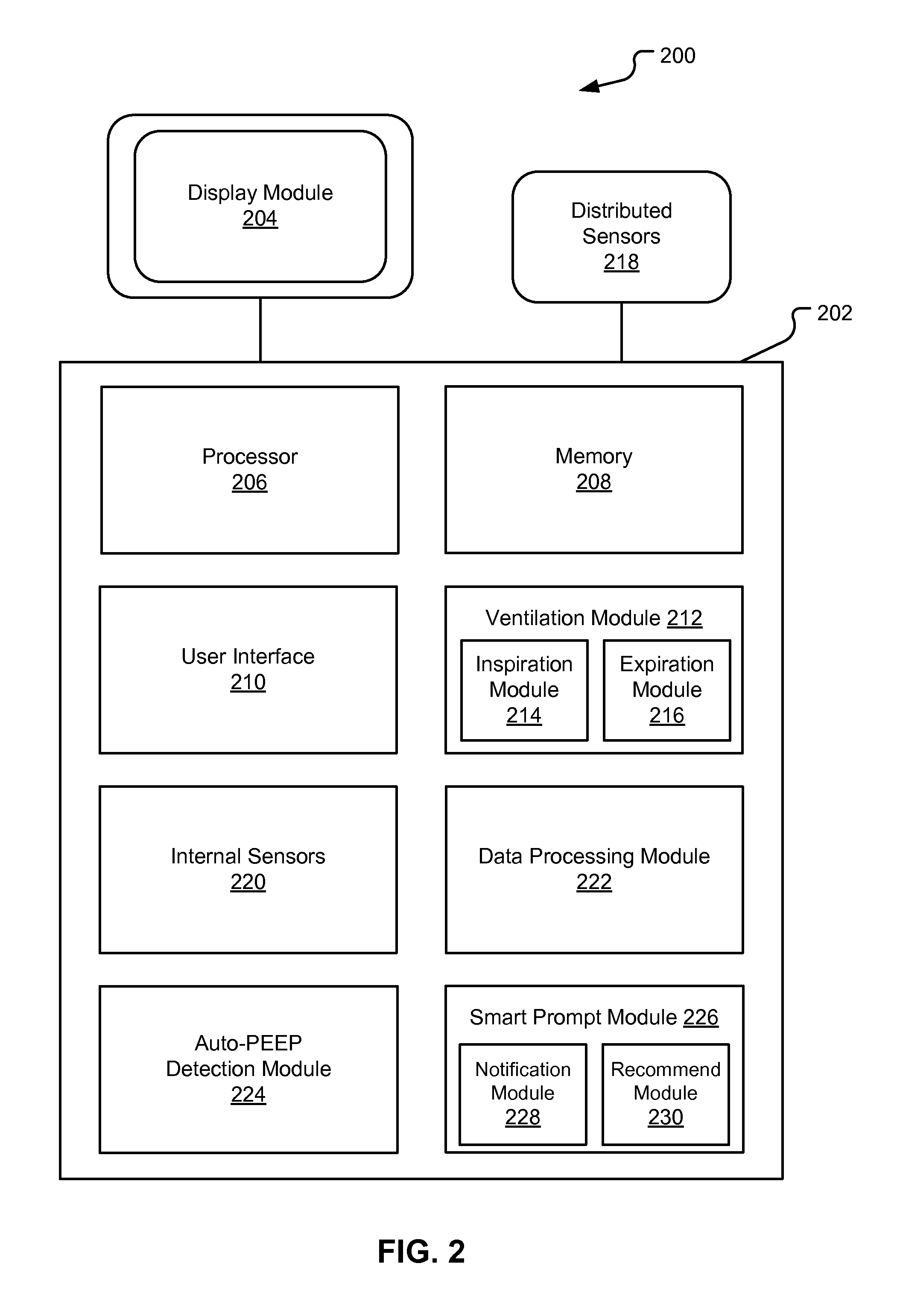Ventilator-Initiated Prompt Regarding Auto-PEEP Detection During Volume Ventilation Of Non-Triggering Patient Exhibiting Obstructive Component
a technology of auto-peep detection and ventilator, which is applied in the field of ventilator, can solve the problems of difficult diagnosis of auto-peep, many clinicians may not readily assess and evaluate the diverse ventilatory data to detect certain patient conditions and/or changes, and the complexity of modern ventilatory equipment has become increasingly complex
- Summary
- Abstract
- Description
- Claims
- Application Information
AI Technical Summary
Benefits of technology
Problems solved by technology
Method used
Image
Examples
Embodiment Construction
[0016]Although the techniques introduced above and discussed in detail below may be implemented for a variety of medical devices, the present disclosure will discuss the implementation of these techniques for use in a mechanical ventilator system. The reader will understand that the technology described in the context of a ventilator system could be adapted for use with other therapeutic equipment for alerting and advising clinicians regarding detected patient conditions.
[0017]This disclosure describes systems and methods for monitoring and evaluating ventilatory parameters, analyzing ventilatory data associated with those parameters, and providing useful notifications and / or recommendations to clinicians. Modern ventilators monitor, evaluate, and graphically represent a myriad of ventilatory parameters. However, many clinicians may not easily identify or recognize data patterns and correlations indicative of certain patient conditions, changes in patient condition, and / or effective...
PUM
 Login to View More
Login to View More Abstract
Description
Claims
Application Information
 Login to View More
Login to View More - R&D
- Intellectual Property
- Life Sciences
- Materials
- Tech Scout
- Unparalleled Data Quality
- Higher Quality Content
- 60% Fewer Hallucinations
Browse by: Latest US Patents, China's latest patents, Technical Efficacy Thesaurus, Application Domain, Technology Topic, Popular Technical Reports.
© 2025 PatSnap. All rights reserved.Legal|Privacy policy|Modern Slavery Act Transparency Statement|Sitemap|About US| Contact US: help@patsnap.com



